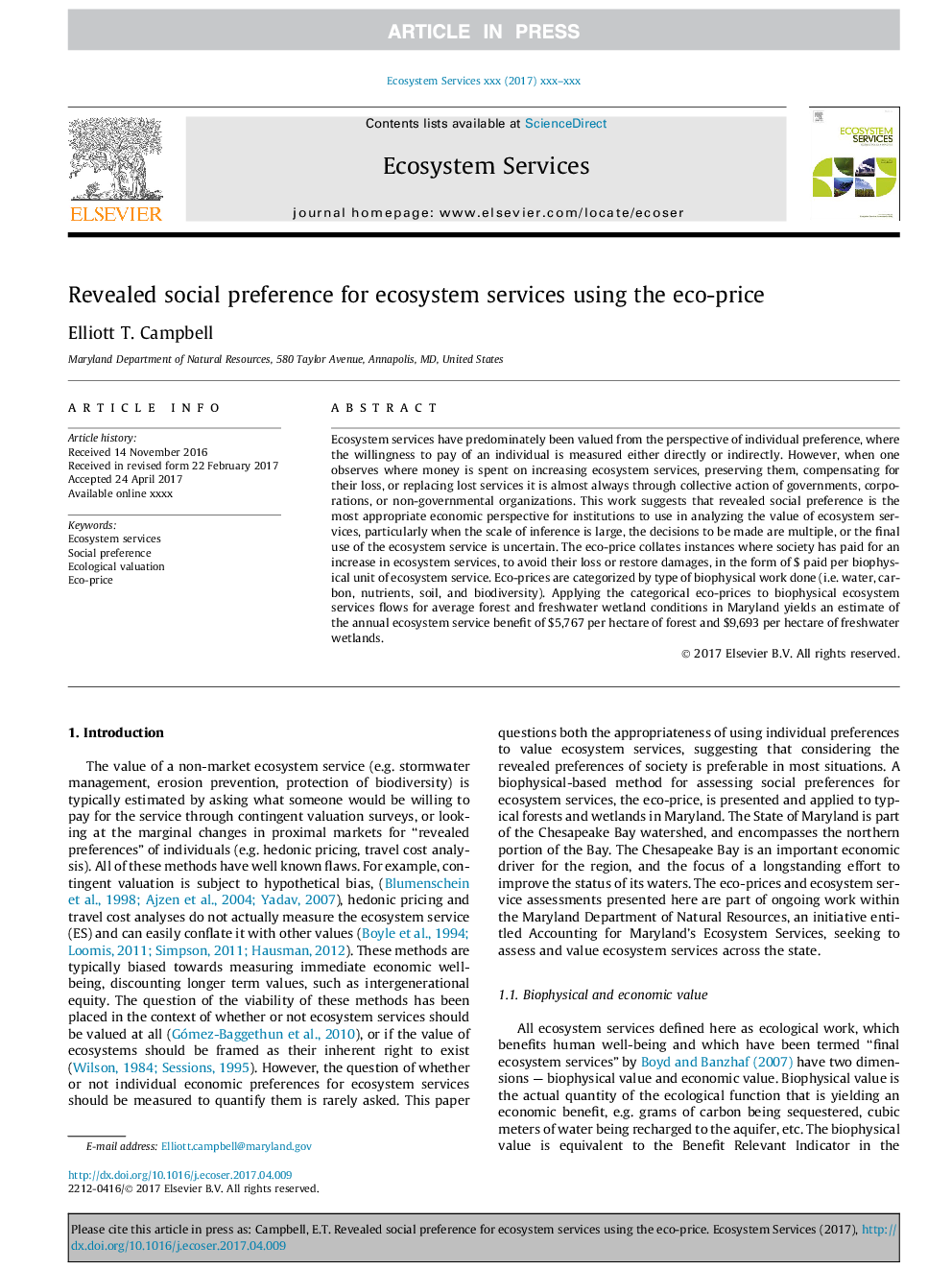| Article ID | Journal | Published Year | Pages | File Type |
|---|---|---|---|---|
| 6556351 | Ecosystem Services | 2018 | 9 Pages |
Abstract
Ecosystem services have predominately been valued from the perspective of individual preference, where the willingness to pay of an individual is measured either directly or indirectly. However, when one observes where money is spent on increasing ecosystem services, preserving them, compensating for their loss, or replacing lost services it is almost always through collective action of governments, corporations, or non-governmental organizations. This work suggests that revealed social preference is the most appropriate economic perspective for institutions to use in analyzing the value of ecosystem services, particularly when the scale of inference is large, the decisions to be made are multiple, or the final use of the ecosystem service is uncertain. The eco-price collates instances where society has paid for an increase in ecosystem services, to avoid their loss or restore damages, in the form of $ paid per biophysical unit of ecosystem service. Eco-prices are categorized by type of biophysical work done (i.e. water, carbon, nutrients, soil, and biodiversity). Applying the categorical eco-prices to biophysical ecosystem services flows for average forest and freshwater wetland conditions in Maryland yields an estimate of the annual ecosystem service benefit of $5,767 per hectare of forest and $9,693 per hectare of freshwater wetlands.
Related Topics
Life Sciences
Agricultural and Biological Sciences
Agricultural and Biological Sciences (General)
Authors
Elliott T. Campbell,
